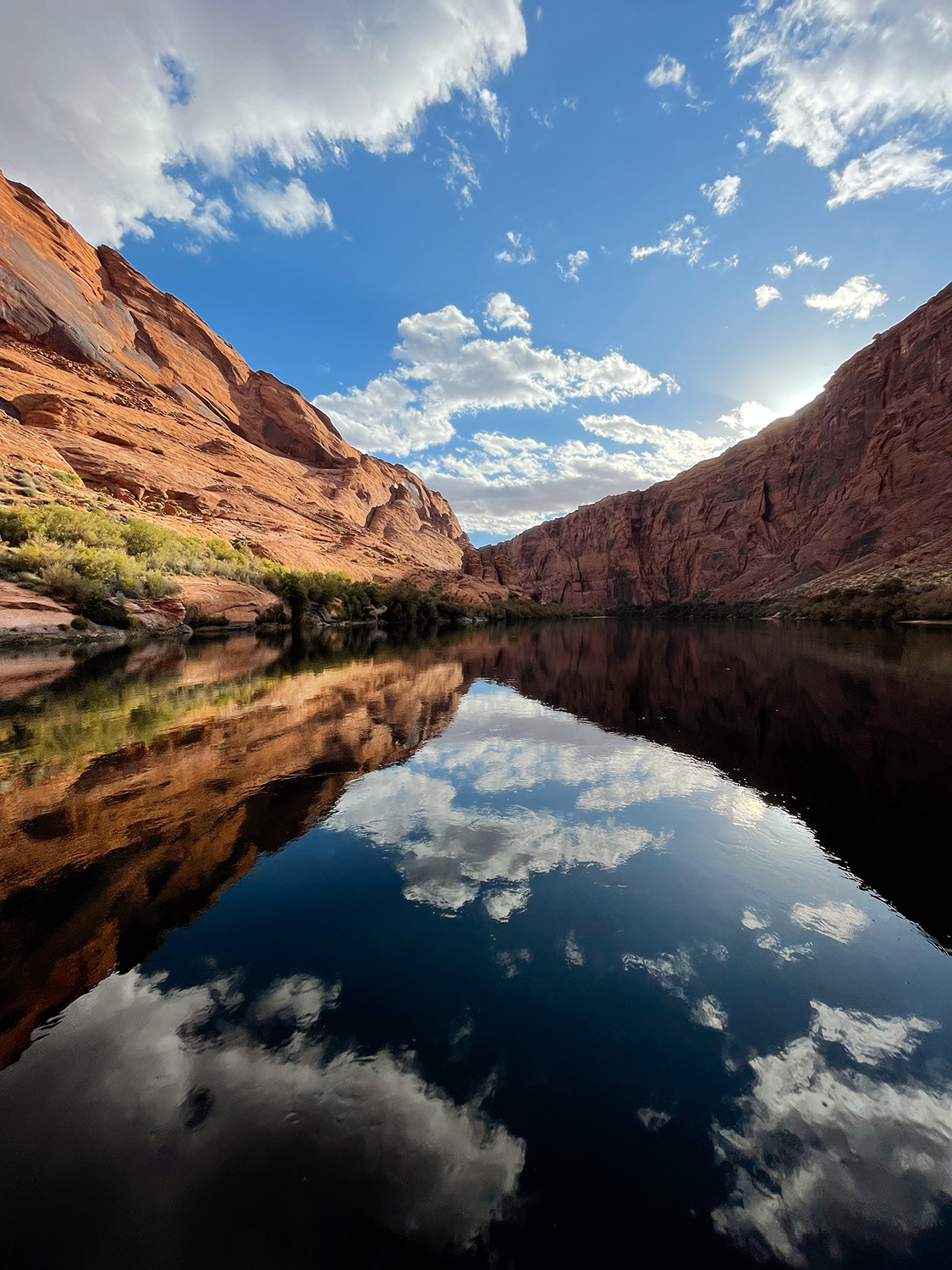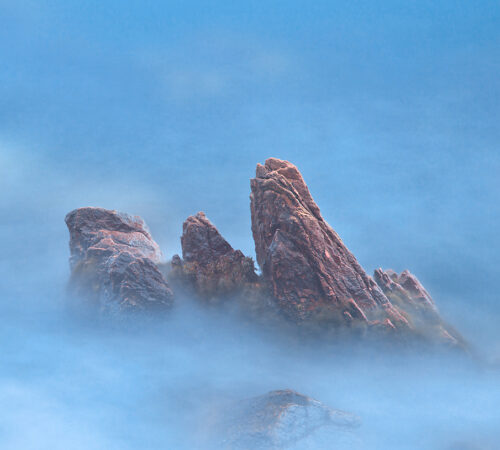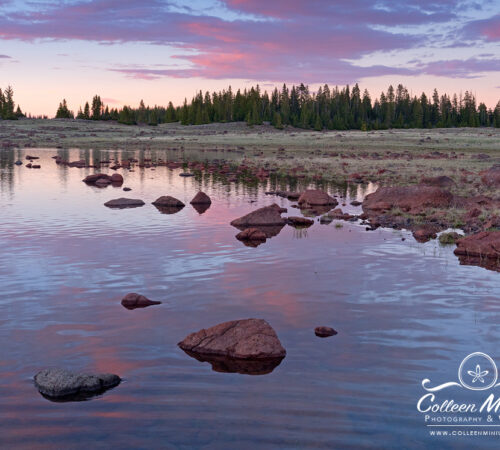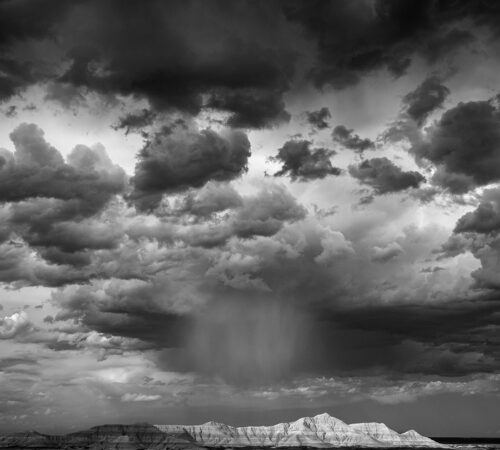The Best Camera

Dear Bubbles:
Have you ever taken a day or two and just used your phone camera (for more than snaps or selfies)? Do you feel with the newer technology, these phones can, at least, carry their own weight? Is it a viable alternative? Would love to hear your thoughts.
Linda
Dear Linda,
Funny you should ask…about three weeks ago, my big-girl camera (my Olympus OMD EM1 Mark II) took an unplanned dip in the Colorado River. On the first morning of an overnight trip in Glen Canyon, Arizona, a small rapid and a gust of wind flipped my stand-up paddleboard like a pancake. Unfortunately, I had forgotten to seal up the dry bag containing my camera (and wallet and car keys among other items…). Miraculously, nothing fell out of the dry bag during the dunk. However, I had about a gallon of water swishing around in it. My camera was swamped, dead as a fish out of water. In the first hour of a two-day trip.
My iPhone-—possibly jealous of all the fun the big-girl camera was having—also came along for the swim. It was stuffed into one of my non-waterproof pockets in my life vest. It was underwater longer than my camera. I was able to right side up my board (thus removing my dry bag from the water quickly), but my iPhone remained completely submerged in my PFD during the entire event. When I pulled it out of my pocket to dry it, miraculously (again), my phone worked immediately.
Boy, was I relieved! Here I was in this remarkable and breathtakingly beautiful place for the next 36 hours after surviving an unexpected swim (and a few questionable decisions that had led to my big-girl camera’s demise…), and I still had a working camera! Hooray! After all, as photographer Chase Jarvis said, “The best camera is the one that’s with you.”
I made the photograph at the top of this post—and many others on that trip—with my iPhone. And it was awwwwwwesome. So freeing! So the answer to your first question, is yes!
But who cares what kind of camera that photograph (or any others) came from? Could you tell what camera I used just by looking at it? Even if you could, would knowing it was made with an iPhone diminish the value of the photograph, the visual expression, or your opinion of me as a photographer? Even if so, who cares what other people think anyway?! As I like to say, to bastardize Eleanor Roosevelt’s original quote, “What other people think about your photographs is none of your business.”
Imagination and expression (i.e. your “vision”) does not originate with a gadget. It comes from your ability to compose, work with light, and tell a story—YOUR story. We make photographs with our brains. Our cameras are simply tools to help us express our inner ideas about the moments in the world in a way that’s worth recording to us as individual photographers.
Tools do not define talent. Nobody asks a me what brand of pen I used to write my books or what kind of knife I used to slice pieces of pie. While there may be specific—and perfectly valid—reasons why you’d choose a big-girl (or big-boy) camera over iPhone in certain situations (e.g., to meet client expectations), photographers need not waste any time on the nonsense of “this camera is better than that camera” judgments. Instead, let’s focus on appreciating what a photographer creates in their end frame.
The truth of the matter is, today just about every camera on the market—including smartphones—is capable of making images you can be proud of. Just like DSLR and mirrorless camera technology, smartphone technology has evolved in terms of megapixels, dynamic range, sensor performance, etc. In fact, today’s iPhone cameras make way better images than my first digital single-lens reflex (DSLR)—a Canon 5D—in 2007 ever did. And! I was routinely getting published by national-level outlets like Arizona Highways and National Geographic then…with images from that DSLR with a mere 8 megapixels and an unrefined sensor. The 20.4 megapixels from my Olympus camera provides enough data to not only get routinely published by magazines, books, and calendars, but also to enlarge prints to over six feet. Apple just announced the iPhone 16 with a 48-megapixel camera. I’m pretty sure 48 megapixels is more than enough data for most of us to work with…
What’s that you say? You’d like to blow your image up to billboard size? OK, cool! Keep in mind, you only need in between 15-20 dpi (dots per inch) for a billboard…so if you make a photograph with the iPhone 16, which spits out a native resolution of 8064 x 6048 pixels, doing the math means you can make a billboard-sized image at 20 dpi to fit approximately 403 inches by 302 inches. That’s 33.5 feet by 25.2 feet. Straight out of camera.
Granted you aren’t going to view a billboard up close like you would a photographic print in your hallway (which is usually printed in between 200-300 dpi), but even editors with national-level magazines have suggested they only need 8 megapixels for an uncropped two-page spread (also usually printed between 200-300 dpi). To bring this point home, several of the photographs made by my mom in my So Said the River book were captured with an ancient iPhone. Can you pick out which ones? Doubtful…to my earlier point, instead of nitpicking what tool she used, let’s celebrate that my mom is now a published photographer with awesome storytelling images about an adventure together we’ll never forget! Yahoo! Go Mom!
Sure, DSLR and mirrorless cameras will outperform phone cameras in a side-by-side comparison of prints at 48 megapixels when studied closely and with a critical eye. Phone cameras have smaller sensors which limits their ability to capture light which affects image quality, particularly in low-lighting situations. In addition, smaller sensors can result in less dynamic range and introduce more noise into images, especially in darker scenes. Unless you’re working with external outlets that have specific resolution and size requirements for their publications—which is completely fair—this may not be an issue for you.

A smartphone can also offer greater convenience with less weight. Unlike most camera gear, a smartphone fits in your pocket and weighs less than a loaf of bread. Phone cameras come with built-in lenses, typically offering wide-angle, ultra-wide, and telephoto options. These lenses often have limited telephoto and close-up capabilities. For example, phones use computational photography to create shallow depth-of-field effects (e.g., bokeh), but this is software-driven and can sometimes look weird and artificial. DSLRs and mirrorless cameras naturally produce beautiful bokeh due to their larger sensors and fast lenses with wide apertures (e.g., f/1.2 or f/1.4). The result is a more realistic and pleasing (eh-em, bubble-like) out-of-focus background. So for images that require shallow depth-of-field, the DSLRs and mirrorless cameras currently enable greater control and produce higher quality results than mobile devices. But at an added financial cost and at greater weight and size. Is it worth it? That’s up to you.
Besides, you can buy additional lenses, accessories, and apps that extend your phone’s capabilities (like Apexel lenses like https://www.shopapexel.com/collections/mobile-lens/products/apexel-5-in-1-lens-kit). Even with the add-ons, your phone will still fit in your pocket and weigh less than a loaf of bread.
Also, a phone doesn’t have all the many buttons, dials, menus, and settings that bigger cameras have (which sometimes make you feel like you need a PhD to understand). Your phone is like “Hey friend, tap here. I got you.” Phone cameras eliminate the metal gymnastics and paralysis that sometimes comes with cameras with abundant options. I mean, you don’t want to miss the jaguar running across the street under a double rainbow because you’re trying to find the dial that increases your ISO and hoping your happen to turn it the right way to do so. You. Just. Shoot. And then enjoy the magic moment of jaguar running across the street under a double rainbow with your own eyes, not through a viewfinder.
Now, just because their are fewer buttons, dials, menus, and settings doesn’t mean you should forget everything you know about the technical aspects of photography—or stop learning about them. It’s important, at least to me and my work, to know what my camera is doing to my data and/or image, when, and why. But you might not care or care to care, and that’s fine. To each their own! Once you know the insides and outs of the technical aspects of photography, it becomes second nature and you don’t think about it anyway, no matter the camera in your hand. The great thing about phone cameras is they strip away the “gear envy” and technical fussing and place the focus on expressing your creative vision in the field.
When you get home, you don’t have to worry about processing phone camera images either. Smartphones offer instant in-camera editing and public sharing. Plus, apps like Snapseed and Lightroom Mobile enable you fine-tune your images with professional-grade editing tools right from your phone. You could turn a piece of pie into an abstract work of art before you’ve even finished breakfast!
(If you’re interested in learning about your options, check out my friend and fellow photographer Charles Needles’ field guides on Shooting apps and Editing apps for mobile devices.)
I can hear the internet purists screaming, “But you lose control over the final image!” Do you though? Because I press a few buttons and move sliders around in Photoshop just the same with my RAW files. We don’t necessarily lose control; we merely shift it elsewhere. Besides, back to my earlier point, if the resulting image looks stunning and matches your vision, does it matter if your camera—or any other tool like Photoshop or Lightroom or a darkroom or an iPhone app—helped you get there?
If you do wish for more control over how your image data is processed, more recent smartphone provide the ability to record RAW files. The only potential downside is these files take up more space on your device more than the native phone formats. If you’re managing your space wisely, it’s not really an issue. RAW files from larger cameras will deliver even more data, which means more space on your hard drive—but you do gain greater latitude in processing, especially when adjusting exposure, color, and white balance. But if you don’t really love processing your images, phones for the win.
Then finally, let’s talk durability. My iPhone 12 survived a prolonged swim in water. My big-girl camera and lens did not (despite having survived a previous four-second swim in 2021 and being weather-sealed). What else is there to say?
While there are trade-offs and benefits for all available cameras out there, phone cameras can and do carry their weight—literally and metaphorically!—and offer a viable alternative to other cameras. In fact, as I processed how best to replace my dead camera and lens, I seriously contemplated not replacing my gear and becoming strictly an iPhoneographer. A couple of great deals on used equipment changed my mind. For now. I’m still considering it. Especially after writing this article! HA!
At the end of the day, regardless of whether you’re using a phone or a fancy camera or the sun or a toaster, the goal of photography remains the same: to express meaningful-to-you moments, emotions, ideas, and stories. I don’t care how you get to making your image, just that you do. Go forth and create! With whatever camera you wish!
If you’d like more insight into iPhoneography, check out the The iPhoneography Podcast. If you still feel any semblance of self-doubt or shame about “only” using your mobile device to make images and need a pep talk, please read one of my earlier articles called “Real Photographer” https://dearbubbles.com/2020/06/real-photographer. Raaaaawhrrrrr!
Be well, be brave, be wild,
~Bubbles
If you liked this post and others like it, please consider supporting Dear Bubbles either through a monthly contribution through Patreon or a one-time donation through Buy Me a Coffee. Learn more about both at https://dearbubbles.com/support.
Have a question about photography and/or the creative life? Need some advice? Looking for inspiration? Send your question to Dear Bubbles at colleen@colleenminiuk.com to be possibly featured in a future column post. (If you’d prefer a different display name than your real first name, please include your preferred nickname in your note.)




